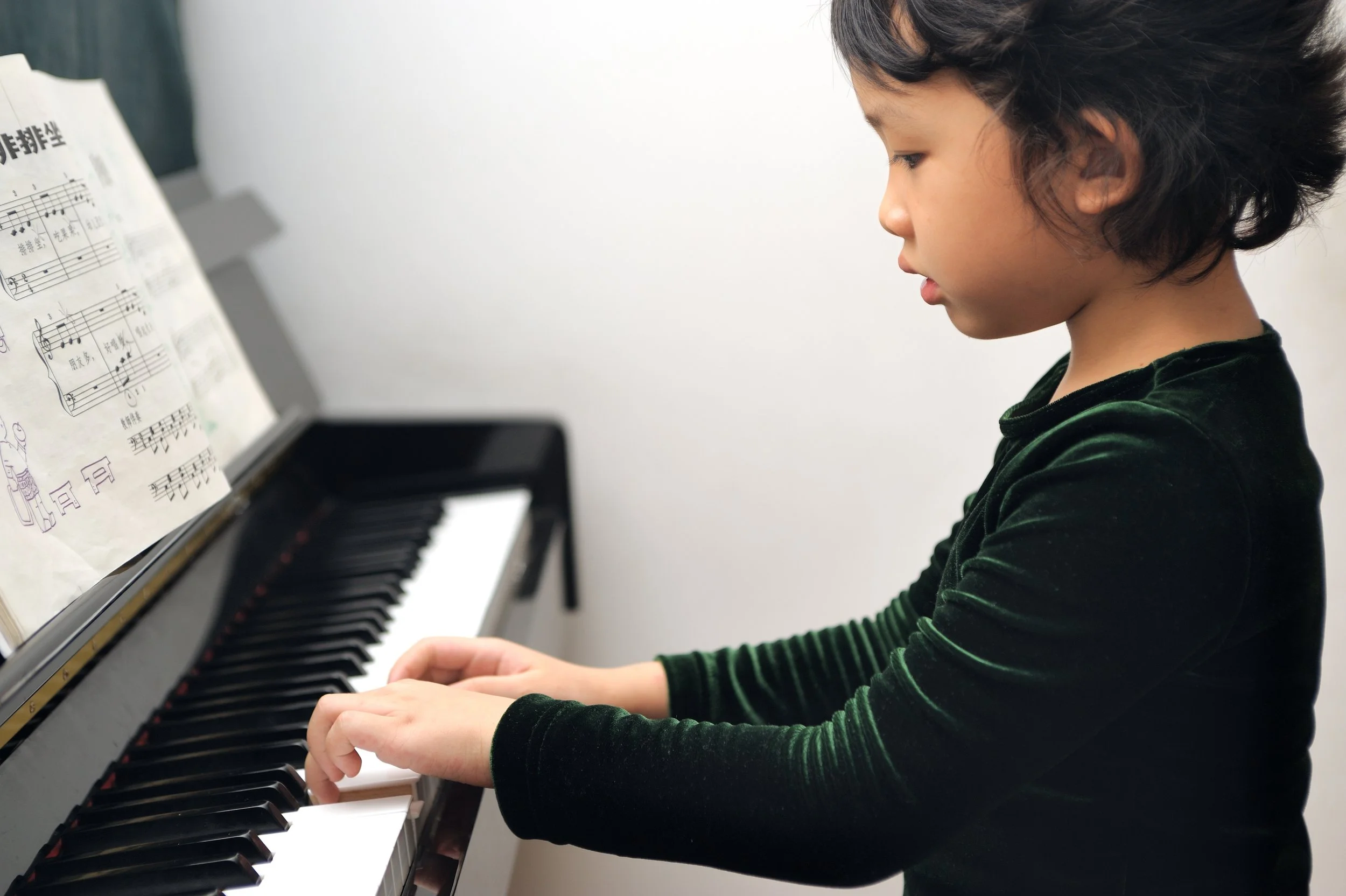Imagine up to 100 kids playing piano at the same time! By the same time, I don’t mean a chaotic wall of sound, but a multi-level ensemble directed and performed like an orchestra. This is the unique opportunity some of my school-age and adult students had this past summer for “Make Music Day.” It was so much fun! Since learning piano is often a solo endeavor, students don’t always have the ensemble experience of those who play in band or orchestra. Because of this, when my students heard about it, many jumped at the chance to participate. Enthusiasm for this event even led some students to more quickly learn their parts, rehearse together outside of lesson time, and even prepare music above their level. It was such a rewarding experience for them and for me!
This reminded me that, when most people think of piano lessons, they picture the very traditional model of 1 student with 1 teacher. After all, it’s been taught this way for hundreds of years! Or images may come to mind of a large piano lab with each student wearing headphones and working alone. While both of these teaching methods have their pros and cons, in this article, I’m referring to group lessons that are taught without headphones and with students playing and learning together. Learning to play the piano in this setting has unique benefits that aren’t as easily integrated into private lessons. Read on for 5 powerful reasons to consider group piano lessons.*
The power of the group: Participants in group lessons are part of a team, and this positive peer pressure inspires and motivates students to work harder to keep up with the group. This can increase motivation to practice outside of class! Students may also keep taking lessons over a longer period of time, since they are making music with friends.
It enhances music skills: Students who play in a group develop ensemble skills, such as listening carefully, keeping a steady beat, and playing with others. These internalized skills can be extremely helpful in future music learning settings, including band or orchestra.
It develops performance skills: In class, students can have regular opportunities to play for their classmates in a low-stress environment. Over time, this builds poise and confidence in their ability to successfully perform what they are learning. In addition, performing with a group can be an excellent stepping stone to solo performance, especially for students who are more nervous when playing for others.
Concepts reinforced through collaboration: Learning to play a musical instrument and understand music theory requires LOTS of repetition. Playing games and engaging in other group activities can provide fun and varied opportunities to review important musical concepts. This is so much more enjoyable than only doing written homework and reviewing at home!
Accessibility: Group lessons may be longer than private lessons, and are often available at a lower cost. So not only are group lessons potentially more affordable, but they also provide more opportunity to learn under the supervision of a skilled teacher. This creates sustainable value, a win for both students and parents.
As you can see, group lessons provide unique benefits to students, and they can be a lot of fun! Whether the group lessons are the primary way a student is leaning piano, or are simply a supplement to private instruction, why not consider group piano?
*These benefits are based on my training and experience teaching Kindermusik, piano intro classes, and multi-level performance classes, and are also taken from the book, Dynamic Group Piano Teaching, by Pamela Pike.













